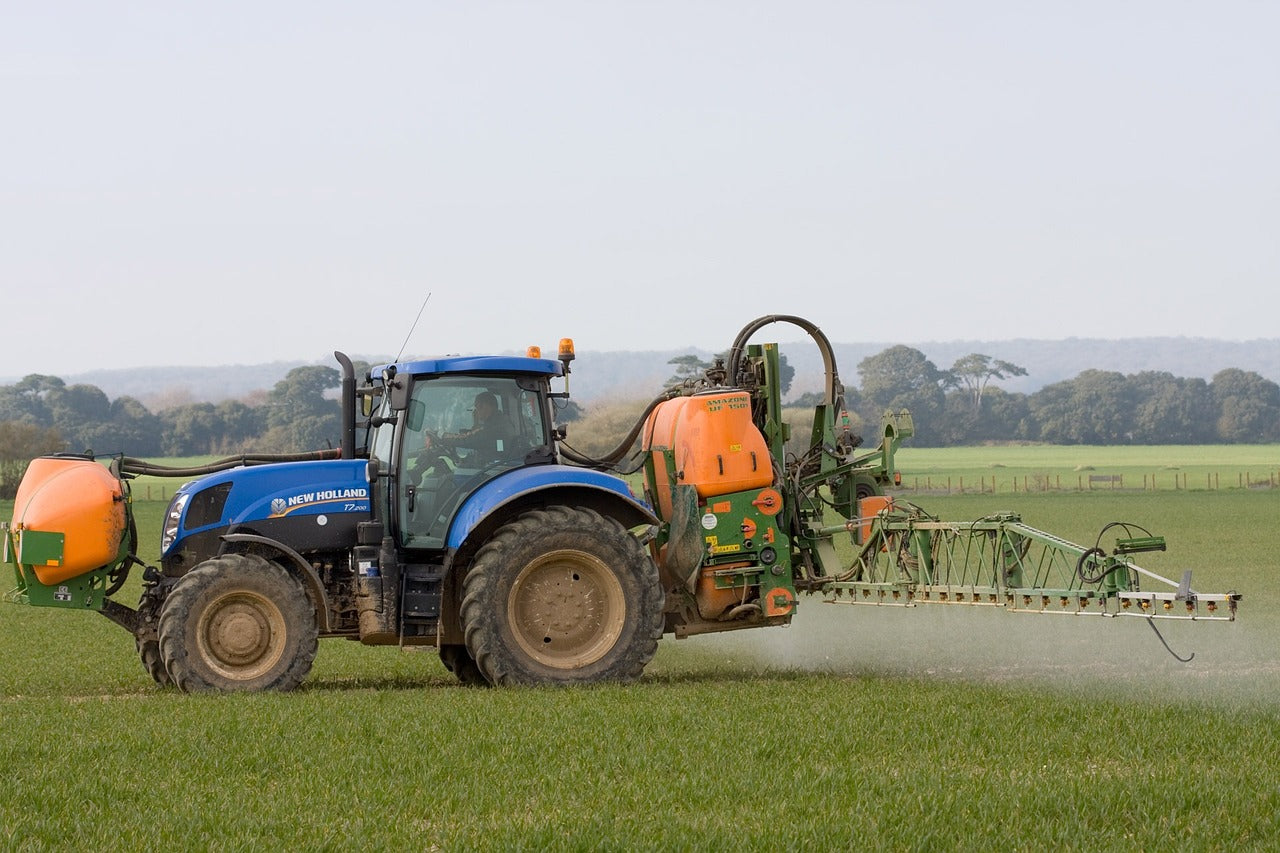“My crops need help NOW!”
What’s the best time to supply additional nutrients to crops? Farmers looking to boost their ROI with mid-season nutrient applications often face this question. When your crops are your livelihood, you want them to be the best, which often means targeting key moments to apply the inputs your crop needs at critical growth stages. Look out into a field after it rains for the first time in weeks. The crops are once again actively absorbing essential nutrients and much-needed water through their leaves. Farmers can utilize this natural phenomenon to increase the size and quality of their yield, allowing plants to take in nutrients when they need them.

Soil applied fertility or foliar applied?
The connection between foliar application and nutrient efficiency has been studied for decades. Research suggests plants can utilize over 90% of fertility inputs that are applied using foliar application, reducing washout of nutrients. For similar amounts of soil-applied nutrients, only 10% of inputs are utilized in some cases. According to Professor T.S. Osborne, an agronomist from the University of Tennessee, “Research indicated that only 10 to 12 per cent of phosphorus fertilizers [were] taken up by plants in the first year; the rest was "locked in" the soil or washed away. Fertilizer applied to soil is largely wasted because it is either bound by soil particles or is washed out of the root zone. If chemical elements could go directly into leaves and bypass the wastefulness of soils, a tremendous saving would result.”
|
Comparing Approximate Ratios of Nutrients Absorbed from Foliar and Soil Applications
|
||||
|
Nutrient and salt
|
Type of Crop
|
Foliar
|
Soil
|
Authority
|
|
Zinc (ZnSO4)
|
Annual Crops
|
1
|
12
|
Lingle & Holmberg (1956)
|
|
Phosphorus (H3PO4)
|
Beans, Tomatoes
|
1
|
20
|
Wittwer, et al. (1957)
|
|
Iron (FeSO4)
|
Grain Sorghum
|
1
|
25
|
Withee & Carlson (1959)
|
|
Magnesium (MgSO4)
|
Grain Sorghum
|
1
|
100
|
Krantz (1962)
|
Some farmers are hesitant to change their application method because foliar inputs may seem more expensive. However, the return on investment for a foliar-applied system can be greater due to the efficiencies a foliar application can provide. Keeping in mind the fundamental principle of a bioactive system: High-quality inputs that are precisely placed, frequently applied, and driven by biology, go a long way towards plant health and return on investment.

Oftentimes, inputs are applied before the plant needs them. For a range of reasons, these applied nutrients are no longer available when the plant needs those nutrients at their critical growth stages. This can not only lead to a smaller overall yield and a decreased ROI, but can also result in overspending on fertilizer that the plant isn’t even using! Foliar applications, when utilized in conjunction with the plant’s natural growth cycle, help to deliver these nutrients at the exact place and time when your plant will get the most out of them.
Benefits of foliar applications:
- Correction of nutrient deficiencies
- Strengthen damaged crops
- Speeds growth
- Stimulate root uptake
- Provide nutrient efficiency
The ideal foliar application takes place on a dew-filled morning, less than 70 degrees, with a mix including minerals, carbon, and biology. A successful nutrient application will avoid dry, mid-day heat, especially during extended drought. This timing ensures nutrients have a better chance of getting into the plants. Foliar applications are absorbed only while the solution is on the leaf surface before the heat of the day causes stomata to close and the solution evaporates away.
Resiliency through foliar applications
One of the best strategies for ensuring crop and system resiliency is to create a surplus of energizing phytonutrients. Secondary metabolites like sugars, oils, and proteins can help crops avoid many environmental stressors that can lead to catabolism. Increased nutrient availability promotes the development of these secondary metabolites.
A healthy plant is more resilient, and foliar applications allow a grower to be nimbler in their farming practices.

How do I make that work for my crops?
To an extent, the beneficial principles of foliar applications are the same across different crop types. A grower can push crops to higher yields while increasing nutrient efficiency by incorporating foliar applications. However, the real benefit is in finding the sweet spot regarding what nutrient at what time to gain the desired results and how many foliar passes are going to give the highest ROI. This exact metric inevitably varies from farm to farm, depending on application schedules, climate, crops, and individual soil conditions.
Including BIOACTIVE™ products in the fertility foliar pass) is a win on multiple levels, for any crop and field. Greater nutrient absorption for increased yield while lessening the demand on the soil nutrient supply, reducing bio-fungicidal needs for competitive exclusion, and minimizing the cost of fungicide.
We understand that your bottom line and your crops are at stake when trying new nutrients and application methods. Our line of biological products is designed to supplement and support foliar applications. BIOACTIVE™ was developed to encourage improved nutrient uptake through soil health.
Contact us today to learn more about using BIOACTIVE™ in your next foliar pass.
Sources:
University of Tennessee Agricultural Experiment Station, "Seventy-Sixth Annual Report of the Tennessee Agricultural Experiment Station, 1963" (1963). Annual Report. https://trace.tennessee.edu/utk_agannual/25


